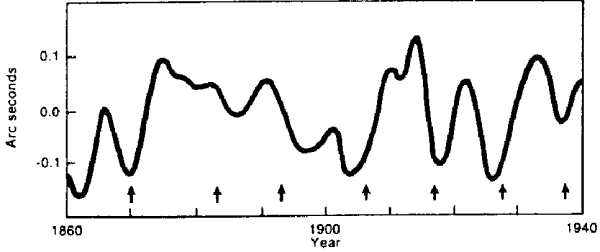 |
Science Frontiers ONLINE No. 51: May-Jun 1987 |
|
|
A Larger Sun During The Maunder Minimum
Europe's so-called "Little Ice Age" (1645-1715) coincided with the Maunder Minimum -- a period during which sunspots were exceedingly rare. How was the sun different during the Maunder Minimum? This subject of solar variability (in both diameter and period of rotation) has been long debated. Some early measurements of solar diameter, begun at Greenwich in 1830, seemed to some to show a steadily shrinking sun, but others found cyclic patterns.
E. Ribes et al have just presented some data on solar diameter actually taken during the Maunder Minimum.
"By analysing a unique 53-year record of regular observations of the solar diameter and sunspot positions during the seventeenth century, we have shown for the first time that the angular diameter was larger and rotation slower during the Maunder Minimum."
A larger sun might be cooler, providing less heat, thus accounting for climate changes. (Ribes, E., et al; "Evidence for a Larger Sun with a Slower Rotation during the Seventeenth Century," Nature, 326: 52, 1987.)
Comment. Just why the sun expands and contracts over a period measured in hundreds of years is a major astro physical conundrum.
 | Variation in solar diameter, 1860-1940. Arrows indicate sunspot maxima. (From ASO-X6 in The Sun and Solar System Debris). |